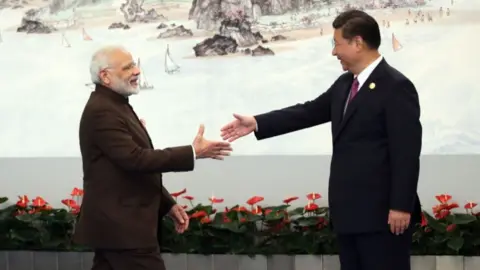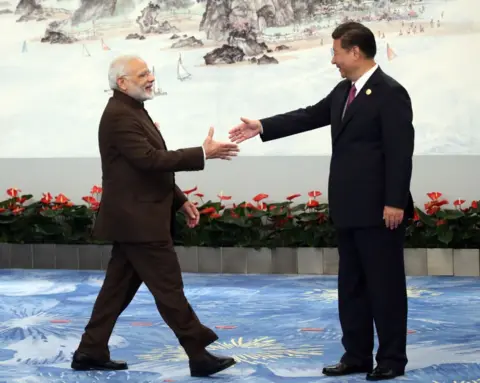The recent controversy involving Italian luxury brand Prada has ignited discussions about how global fashion companies interact with India's rich artistic heritage. Prada found itself under fire in June when its models showcased toe-braided sandals resembling the traditional Kolhapuri chappal, a handcrafted leather shoe from India. Named after Kolhapur in Maharashtra, where they have been crafted for centuries, these sandals were unveiled without any acknowledgment of their cultural roots, prompting public outcry.
In response to the backlash, Prada issued a statement recognizing the origins of the design, expressing eagerness for "meaningful exchange" with local Indian artisans. A team from Prada recently visited Kolhapur to engage with local manufacturers and merchants to better understand the sandal-making process. The discussions reportedly included representatives from the Maharashtra Chamber of Commerce and may pave the way for future collaborations to honor local craftsmanship.
This incident highlights a recurring dilemma in fashion, where major brands often draw inspiration from Indian and South Asian cultures without proper recognition. Earlier this year, similar criticism was directed at Reformation and H&M, which faced accusations of cultural appropriation for designs resembling South Asian attire. Although H&M denied the allegations, Reformation contended that their design was influenced by a model's outfit.
Dior also faced scrutiny recently after its Paris collection featured a coat featuring mukaish work, a traditional metal embroidery technique from northern India, yet failed to credit its origins. Experts argue that while many designers draw from various cultural traditions, they often neglect the importance of respect and acknowledgment in these borrowings.
Shefalee Vasudev, a fashion writer based in Delhi, emphasizes the need for brands to understand and respect the cultural contexts behind the aesthetics they utilize. Failure to do so amounts to a disregard for the very cultures that brands seek to engage with.
Despite the growing interest in India's luxury market, estimated to near $14 billion by 2032, many brands still perceive India as a secondary market for high-end fashion. Arvind Singhal, chairman of Technopak, indicates that luxury names like Prada remain largely unknown to the majority of Indians, limiting their market reach.
Designer Anand Bhushan notes that traditionally, India has acted more as a production hub than a target market for luxury brands, and warns against engineering cultural images without a deep understanding.
However, Nonita Kalra, editor-in-chief of Tata CliQ Luxury, maintains that luxury brands cannot afford to overlook India, as the market is evolving with a younger and more sophisticated Indian clientele. The recent actions of Prada suggest a potential shift, pointing to the necessity of understanding and valuing diverse cultural expressions in the global fashion landscape.
As the discussions surrounding cultural appropriation and responsibility in fashion gain momentum, the current outrage surrounding Prada could serve as a crucial turning point. It prompts not only brands but also Indians themselves to reflect on how to preserve and promote their rich heritage. Without adequate appreciation and credit for local artisans, the exploitation of cultural narratives will persist, blurring the line between inspiration and appropriation.
True change, as advocates like Laila Tyabji indicate, will come only when India's own emerging market for artisan craft flourishes through respect and fair practices, thus empowering local communities rather than allowing global brands to profit unchecked from their heritage.






















